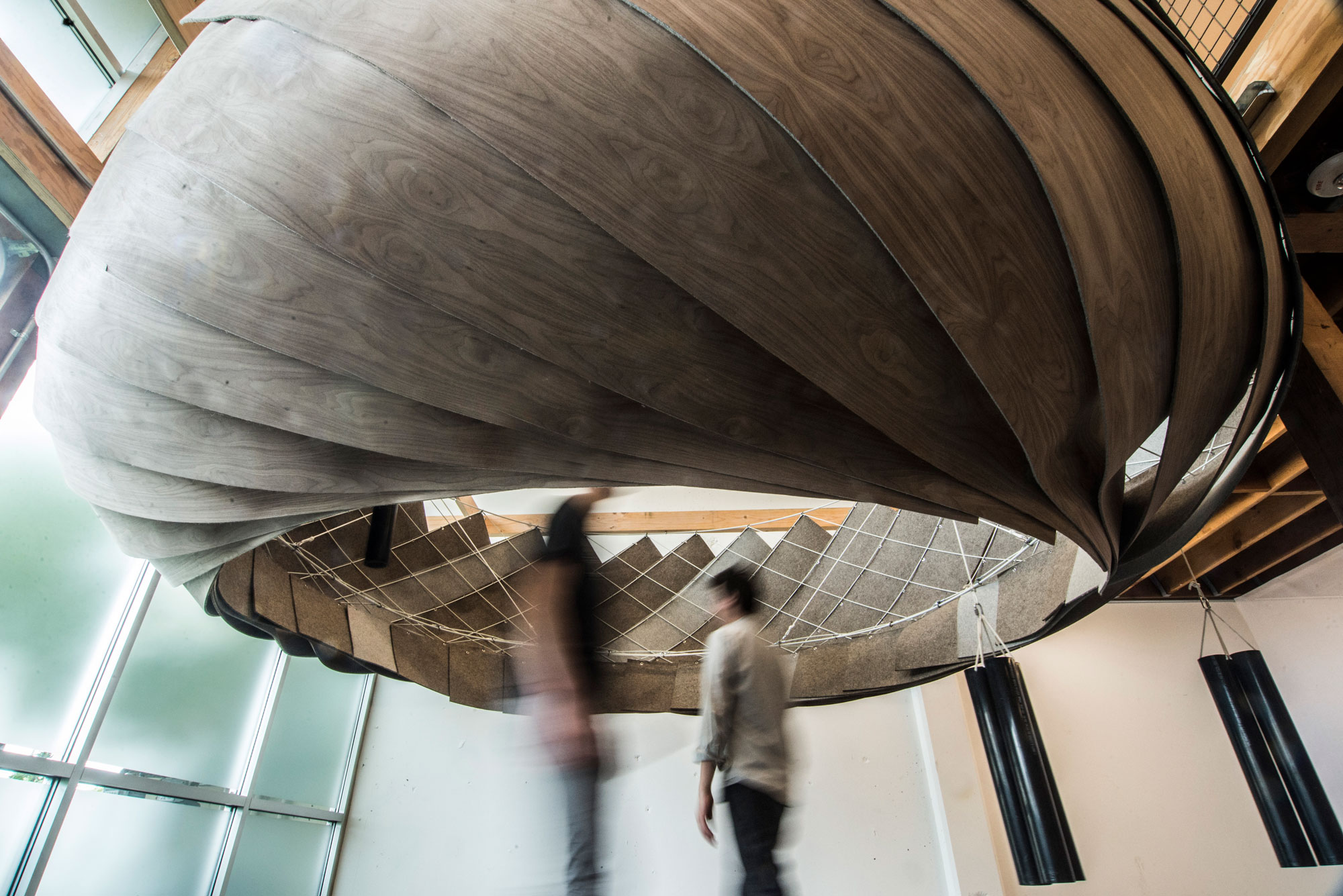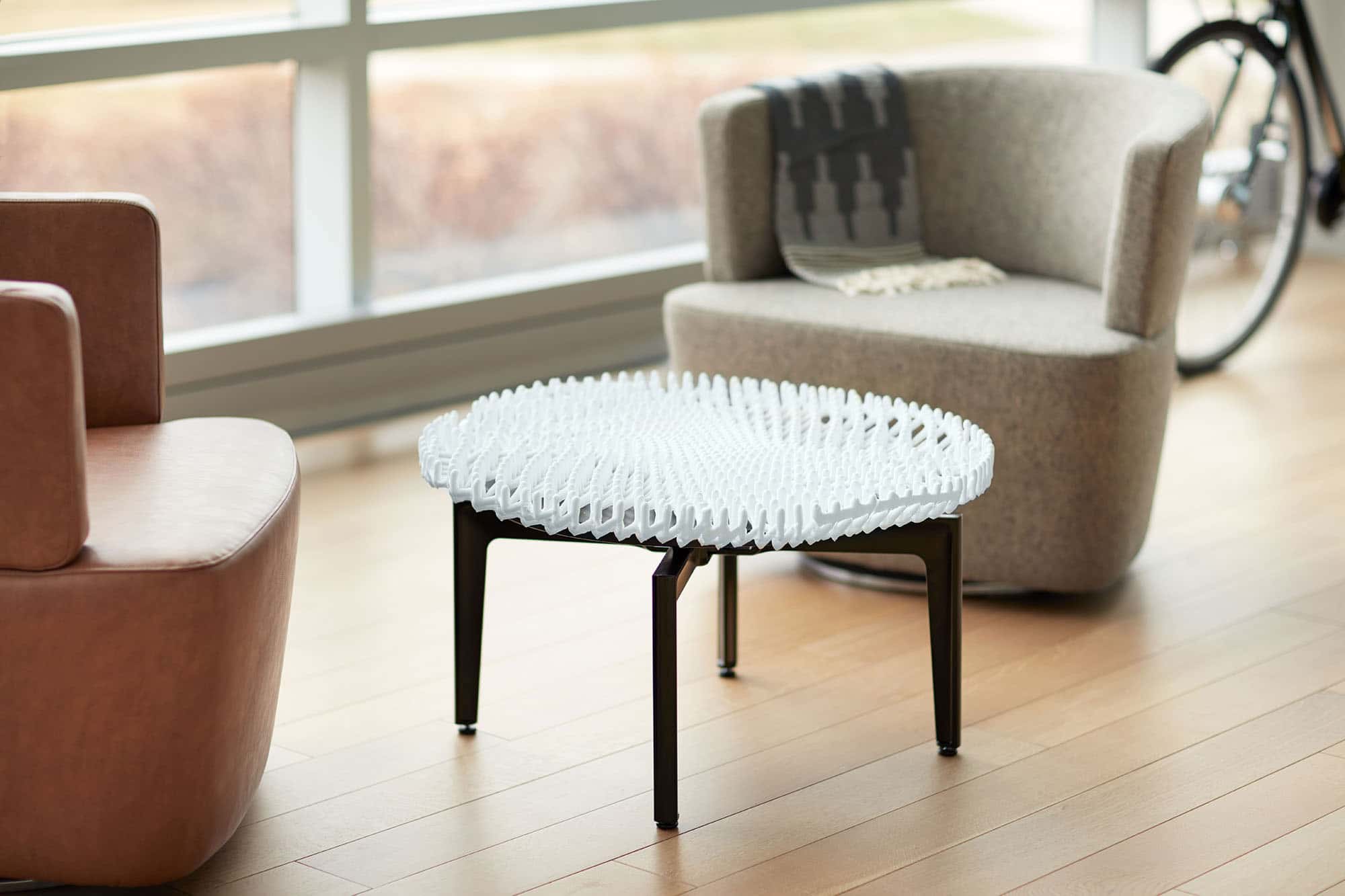
[Photo: Courtesy of TED]
“Everyone thinks we work on futuristic
stuff, and in some ways we do. But we care about making the future real now. We’re looking at tomorrow and next week and trying to get stuff to work.”
Director of the Self-Assembly Lab at MIT and editor-in-chief of 3D Printing and Additive Manufacturing Journal
Some things humans think they’re good at, they’re really not so good at. Like construction. Sure, we’ve been building things for thousands of years, but it’s still difficult—we’re always running into physical limitations or time and budget constraints.
“Buildings still take a lot of time and energy and money to put together, so we could get better at that,” says Skylar Tibbits, director of the Self-Assembly Lab at MIT.
Tibbits’s research focuses on self-assembly, or the idea that, instead of the typical top-down approach to construction—somebody designs the thing, then figures out how to put it together—components could actually assemble themselves, without help from humans or machines. “It’s how our bodies and nature build things,” he says. “I’m interested in how we translate that to the human scale.” He also works on programmable materials, which are designed to change shape or properties on their own, taking cues only from their physical environment.

[Photo: Courtesy of Skylar Tibbits]
“It’s important to not be siloed into one discipline.” Tibbits got his undergraduate degree in architecture, then immediately went to MIT to study computer science, design, and computation. All of that informs the work he does today. “If you get stuck in the legacy of your own work and the legacy of your own discipline, that constrains how you look at a problem.”
A diverse team means more ideas. “I find it really useful to have different perspectives, different skillsets, different venues to exhibit the work, different applications for the work—artistic applications and academic applications and commercial applications. They all afford different opportunities.” At the Self-Assembly Lab, the team includes architects and artists, computer scientists, and mechanical engineers. With so many different perspectives at hand, each problem could find a dozen different solutions.
Just because it’s not immediately useful, doesn’t mean it won’t be someday. Everything Tibbits does falls on a spectrum—from the radical to the relevant. On one end are artsy, far-out projects like the “Rock Print” installation, which used an algorithm to build a sculpture using nothing but filament and loose stones; it was installed at the Chicago Architecture Biennial in 2015. On the other are immediately useful things like programmable carbon fiber, which Airbus is already using in plane engines. It changes shape to improve aerodynamics depending on temperature and air speed, without complicated and expensive electronics.

[Photo: Courtesy of Skylar Tibbits]
If you make a name for yourself doing interesting work, you’ll get to do more interesting work. “We’re pretty lucky because most people don’t come to us and ask us to do a thing that is super mundane and boring. They come to us for the weird stuff, maybe because we built a brand around the weird stuff.”
It’s not about what you can imagine—it’s about what you can do. “Everyone thinks we work on futuristic stuff, and in some ways we do. But we care about making the future real now. We’re looking at tomorrow and next week and trying to get stuff to work.” Sometimes the team at the Self-Assembly Lab does things just to prove they’re possible—like designing components that come together to form a cell phone when tumbled randomly in a machine (yes, they did that). And while some of Tibbits’s work might seem out there, it’s forming the basis of an emerging field. “It’s not just, what’s the craziest thing you can think of?” he says. “If we can’t make it happen, we don’t care about it.”

[Photo: Courtesy of Skylar Tibbits]
“My work is an endless search for what is interesting.” When we think of a noble pursuit, we might expect someone to pick a big problem, and tackle it in a straightforward way. But with a field as new as self-assembly, it’s more about following every interesting lead to learn as much as you can. “It’s like an endless quest instead of working to reach some final goal.”
“In some ways what I do is like basic research, but it’s also super, super close to an artistic practice. If you go the lab of some quantum physicist or mathematician, they’re working on some totally strange, totally irrelevant thing that they’re hoping to make relevant down the line—and it’s the same for artists. They all just wandered into some crazy thing that sucked them in for their whole career. I’m a blend of those two things.”

